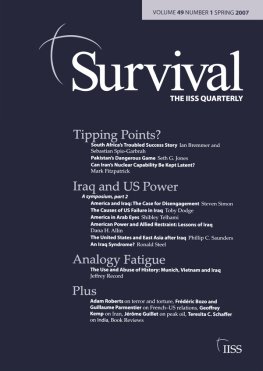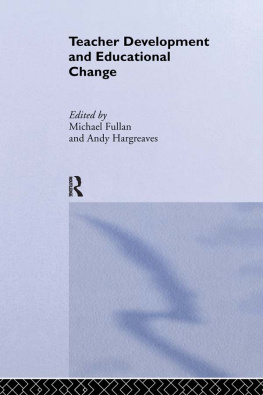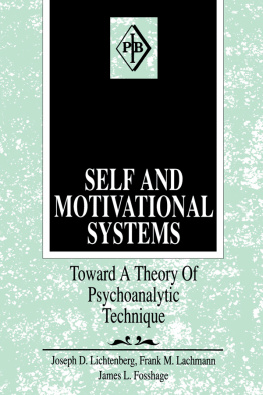ROUTLEDGE LIBRARY EDITIONS: FOLKLORE
Volume 5
THE DEVELOPMENT OF SOVIET FOLKLORISTICS
THE DEVELOPMENT OF SOVIET FOLKLORISTICS
DANA PRESCOTT HOWELL
First published in 1992
This edition first published in 2015
by Routledge
2 Park Square, Milton Park, Abingdon, Oxon, OX14 4RN
and by Routledge
711 Third Avenue, New York, NY 10017
Routledge is an imprint of the Taylor & Francis Group, an informa business
1992 Dana Prescott Howell
All rights reserved. No part of this book may be reprinted or reproduced or utilised in any form or by any electronic, mechanical, or other means, now known or hereafter invented, including photocopying and recording, or in any information storage or retrieval system, without permission in writing from the publishers.
Trademark notice: Product or corporate names may be trademarks or registered trademarks, and are used only for identification and explanation without intent to infringe.
British Library Cataloguing in Publication Data
A catalogue record for this book is available from the British Library
ISBN: 978-1-138-84217-5 (Set)
eISBN: 978-1-315-72831-5 (Set)
ISBN: 978-1-138-84258-8 (Volume 5)
eISBN: 978-1-315-73138-4 (Volume 5)
Publishers Note
The publisher has gone to great lengths to ensure the quality of this reprint but points out that some imperfections in the original copies may be apparent.
Disclaimer
The publisher has made every effort to trace copyright holders and would welcome correspondence from those they have been unable to trace.
THE DEVELOPMENT OF SOVIET FOLKLORISTICS
Dana Prescott Howell
1992 Dana Prescott Howell
All rights reserved
Library of Congress Cataloging in-Publication Data
Howell, Dana Prescott.
The development of Soviet folkloristics / Dana Prescott Howell.
p. cm. (Garland folklore library; 4) (Garland reference library of the humanities; vol. 1288.)
Originally presented as the authors thesis (Ph.D.)University of Pennsylvania, 1984.
Includes bibliographical references and index.
ISBN 0-8240-7148-4 (alk. paper)
1. FolkloreSoviet UnionHistory and criticism. 2. FolkloreSoviet UnionMethodology. I. Title. II. Series. III. Series: Garland reference library of the humanities; vol. 1288.
GR202.H69 1992
398.0947dc20
917983
CIP
Printed on acid-free, 250-year-life paper
Manufactured in the United States of America
Contents
Chapter IV: Theoretical Development in the Years of NEP: The Sociology of Folklore
The Garland Folklore Library series consists primarily of meritorious Masters theses and deserving doctoral dissertations in the field of folklore which for one reason or another were not published upon their initial completion. In theory, all theses and dissertations are supposed to be contributions to the collective knowledge of a given discipline, but in practice it seems the vast majority are simply filed and forgotten. Sometimes the dissertation is too technical; sometimes it is too long for it to be welcomed for publication by cost-conscious university presses. Sometimes the dissertation is eminently publishable, but its author by the time the dissertation is finished is so heartily sick of the subject that he or she wants to put it aside forever.
In any case, there are a number of outstanding dissertations in folklore which warrant a wider readership and which belong in the library of any educational institution or individual with a serious interest in folklore. A few of these are in fact already well known to professional folklorists who may have bothered to send for them through inter-library loan or in more recent times purchased copies from University Microfilms International in Ann Arbor, Michigan. However, it should be noted that not all dissertations are available through UMI. The appearance of selected folklore dissertations and theses, both old and new, in the Garland Folklore Library series will make it much easier for libraries and individuals to obtain these significant studies.
Among the most important hitherto unpublished folklore dissertations are such works as motif and/or tale indices, historic-geographic (comparative) in-depth studies of single folktales or ballads, and surveys of specialized folklore scholarship, e.g., of a particular country or group. There are in addition valuable field collections of folklore data to be found in dissertations. Clearly, there is no dearth of dissertations in folklore which could and should be published. Folklore field data, for example, never ceases to be of valueeven years after its collection. It is the intention of the Garland Folklore Library series to make a number of folklore theses and dissertations available to the growing worldwide community of folklorists.
One day when the history of folkloristics worldwide is written, the author of such a work will surely need to consult the many partial and piecemeal histories of folkloristics in a particular country. Stellar examples of such indispensable surveys include Jouko Hautalas Finnish Folklore Research 18281918 (Helsinki, 1969); Richard M. Dorsons The British Folklorists: A History (Chicago, 1968); and Rosemary Lvy Zumwalts American Folklore Scholarship: A Dialogue of Dissent (Bloomington, 1988). These, of course, are in English. The problem for the would-be historian of worldwide folkloristics lies in the fact that most regional or parochial histories of folklorists are written in the language of the culture or country in question. Representative are Juan Alfonso Carrizos Historia del Folklore Argentino (Buenos Aires, 1953); Leopold Schmidt, Geschichte der sterreichischen Volkskunde (Vienna, 1951); and Gherghe Vrabie, Folcloristica Romna (Bucharest, 1968), which would require a reading knowledge of Spanish, German, and Romanian.
Crucial for our hypothetical world history of folkloristics will be a survey of the development of folklore study in the Soviet Union. One reason for this is that nowhere else in the world (with the possible exception of Nazi Germany) has political ideology been so heavily involved with folklore scholarship. Up until the present time, these folklorists unable to read Russian had little recourse other than Y.M. Sokolovs Russian Folklore (New York, 1950), which does distinguish between Folklore before the October Revolution (pp. 157610) and Soviet Folklore (pp. 611747). For understandable reasons, the complex intertwining of Marxist ideology and compulsory directions in folkloristics was not discussed at great length by Sokolov.
The lacuna in the West of an intimate knowledge of Soviet folkloristics is amply demonstrated by the few broader surveys of historical development of folklore scholarship which exist. Inger M. Bobergs useful Folkemindeforskningens Historie i Mellem- og Nordeuropa (Copenhagen, 1953), as its Danish title suggests, offers coverage only of folklore research in central and northern Europe. There is no mention whatsoever of any Russian or Soviet contributions. In Giuseppe Cocchiaras more ambitious









